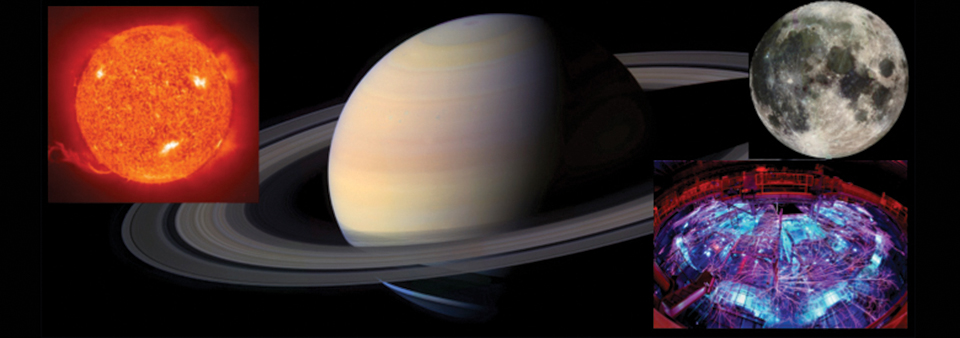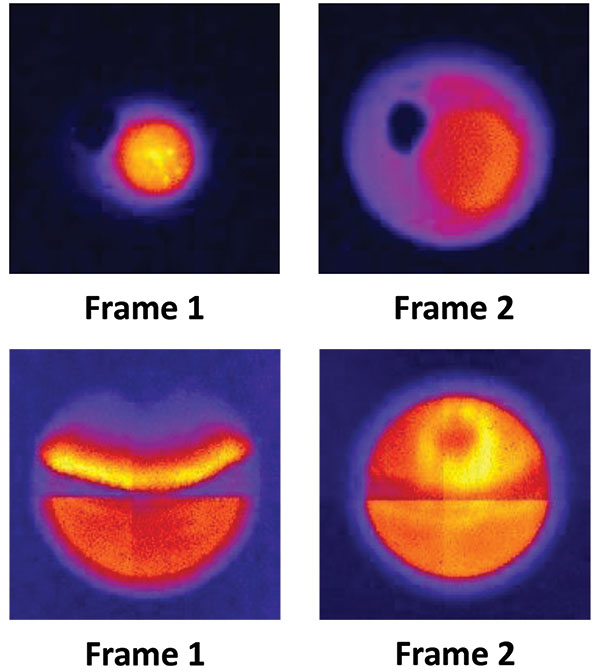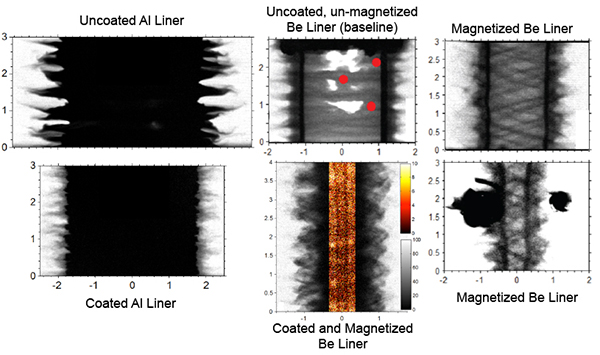
The conditions created on Sandia’s Z machine are literally out of this world — states of matter found in giant planets, meteor impacts, or in the sun are attracting scientists to collaborate with Sandia through the Z Fundamental Science Program (ZFSP). ZFSP made three major scientific discoveries in 2015: The opacity of iron was measured at solar conditions (Bailey et al, Nature). Hydrogen was compressed to a metallic state (Knudson et al, SCIENCE) and the vaporization threshold of iron was measured (Kraus et al, Nature Geoscience). (1600) LF

Figure 2: Hybrid CMOS camera X-ray images on NIF (Shot N150901 – 8/27/2015) at 2ns temporal resolution. The initial NIF application was to measure the time-history of the laser entry hole of a NIF hohlraum (figure courtesy of Hui Chen et al., LLNL).
The first in-situ diagnostic images were captured at both the Sandia Z pulsed power facility and the Lawrence Livermore National Ignition Facility using Sandia’s ultra-high-speed digital X-ray framing camera. Designed and fabricated in collaboration between the Pulsed Power Sciences and Microsystems and Engineering Sciences Applications centers, the cameras consist of a photodiode array bonded to a radiation-hardened custom readout integrated circuit with nearly half a million 25µm pixels. At 1.5ns temporal resolution, the UXI sensors are the fastest multiframe X-ray imagers in the world. NW, NW
Making fusion conditions easier to achieve.

In-flight x-ray snapshots of the compression of liners on Z. Researchers found that by adding a strong axial magnetic field (right images) and a thick insulating coating (left images) they could dramatically alter and reduce the instability growth (bottom center).
Sandia’s Z pulsed power facility uses large currents and the resulting magnetic pressure to compress cylindrical metal tubes (liners) containing fuel to reach the extreme conditions needed for fusion. Instabilities growing up on the outside surface of the liners can limit our ability to do this. Researchers found that by combining strong axial magnetic fields and thick insulating coatings, they could reduce the instability growth, maintaining the inner portion of the plasma liner in a relatively unperturbed state, potentially making fusion conditions easier to achieve. (1600) NW, NW